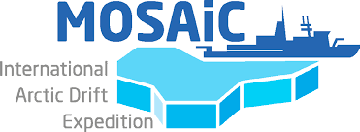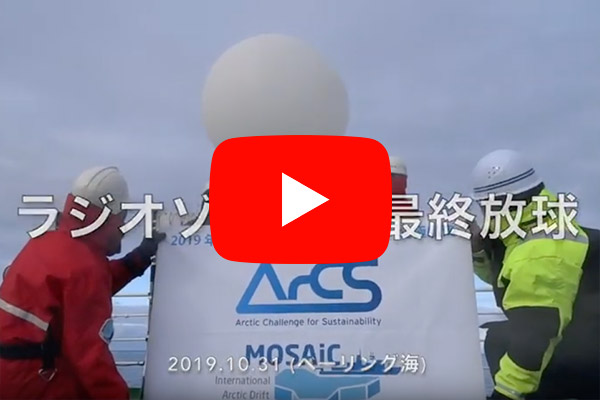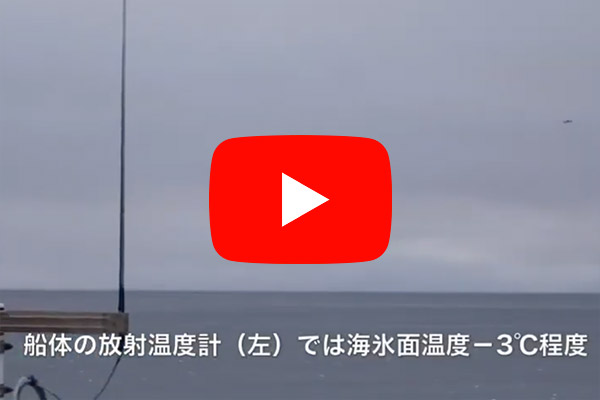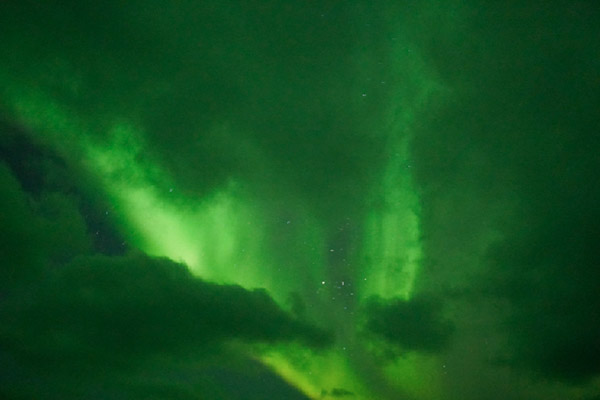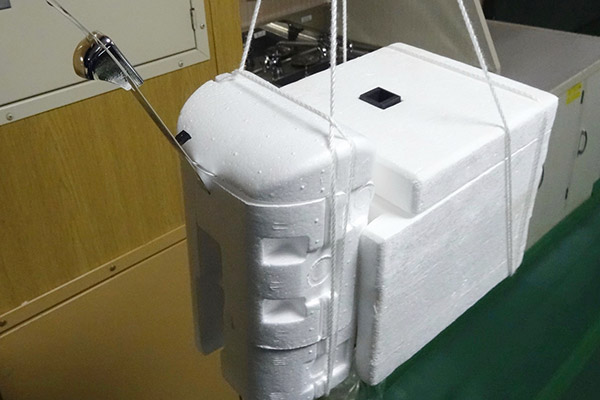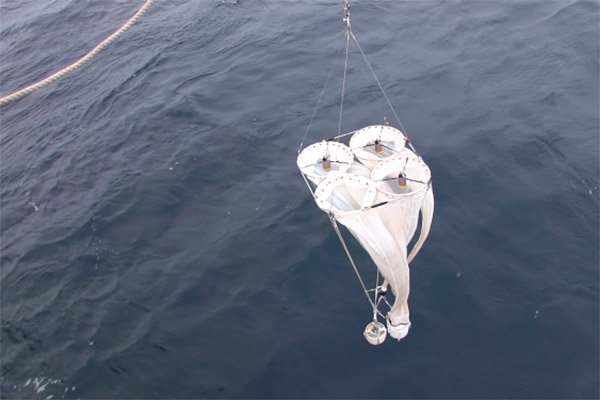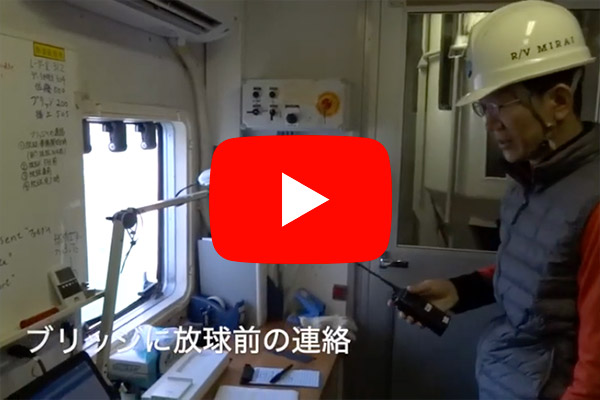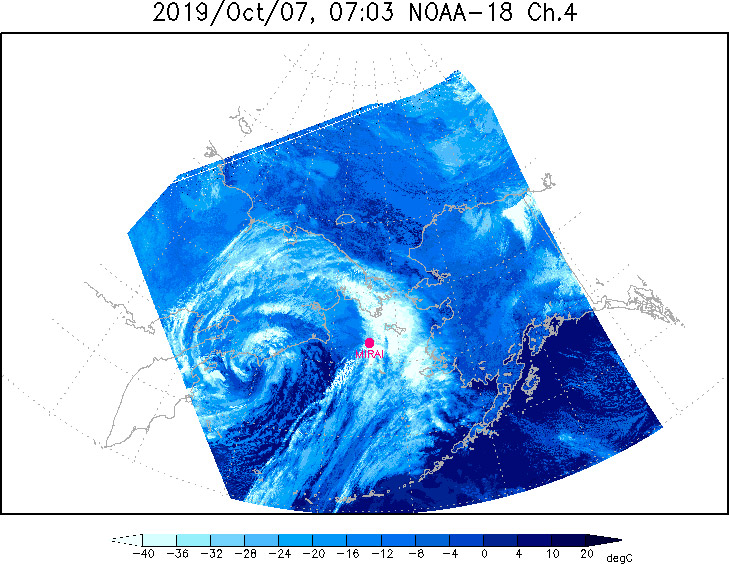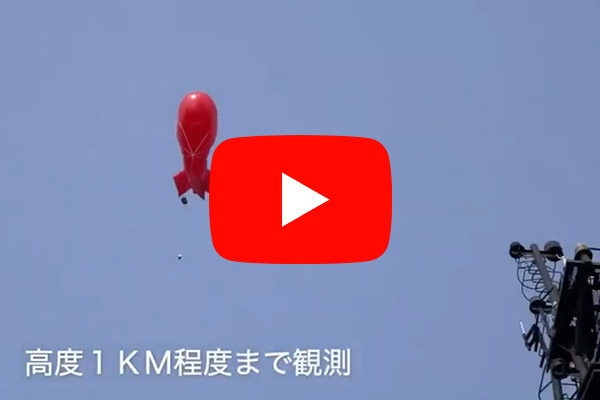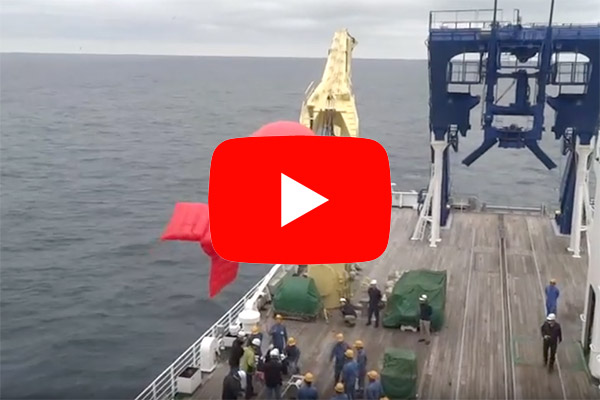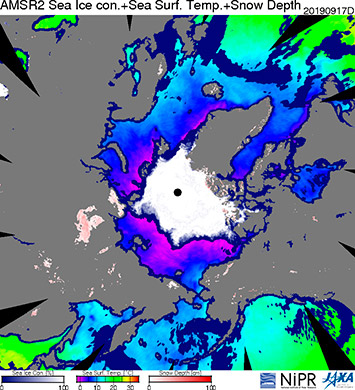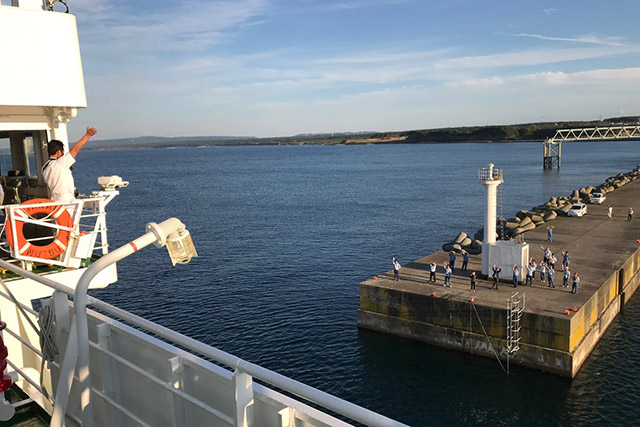
The oceanographic research vessel Mirai, operated by the Japan Agency for Marine-Earth Science and Technology (JAMSTEC), will be on an Arctic cruise again in 2019 as part of the ArCS activities.
In this year, in tandem with the Multidisciplinary Drifting Observatory for the Study of Arctic Climate (MOSAiC), an international joint Arctic observation project mainly led by the Alfred Wegener Institute (AWI, Germany), we will conduct an observation project in October, When the freezing season is getting delayed, with an aim to clarify how the atmospheric and oceanographic environments and marine ecosystem in the Arctic Ocean and the surrounding seas are changed with sea-ice decline.
- Cruise period: 45 days from Friday, September 27, to Sunday, November 10, 2019
- Regions to be surveyed: Arctic Ocean, Bering Sea, North Pacific Ocean
Cruise track of R/V Mirai
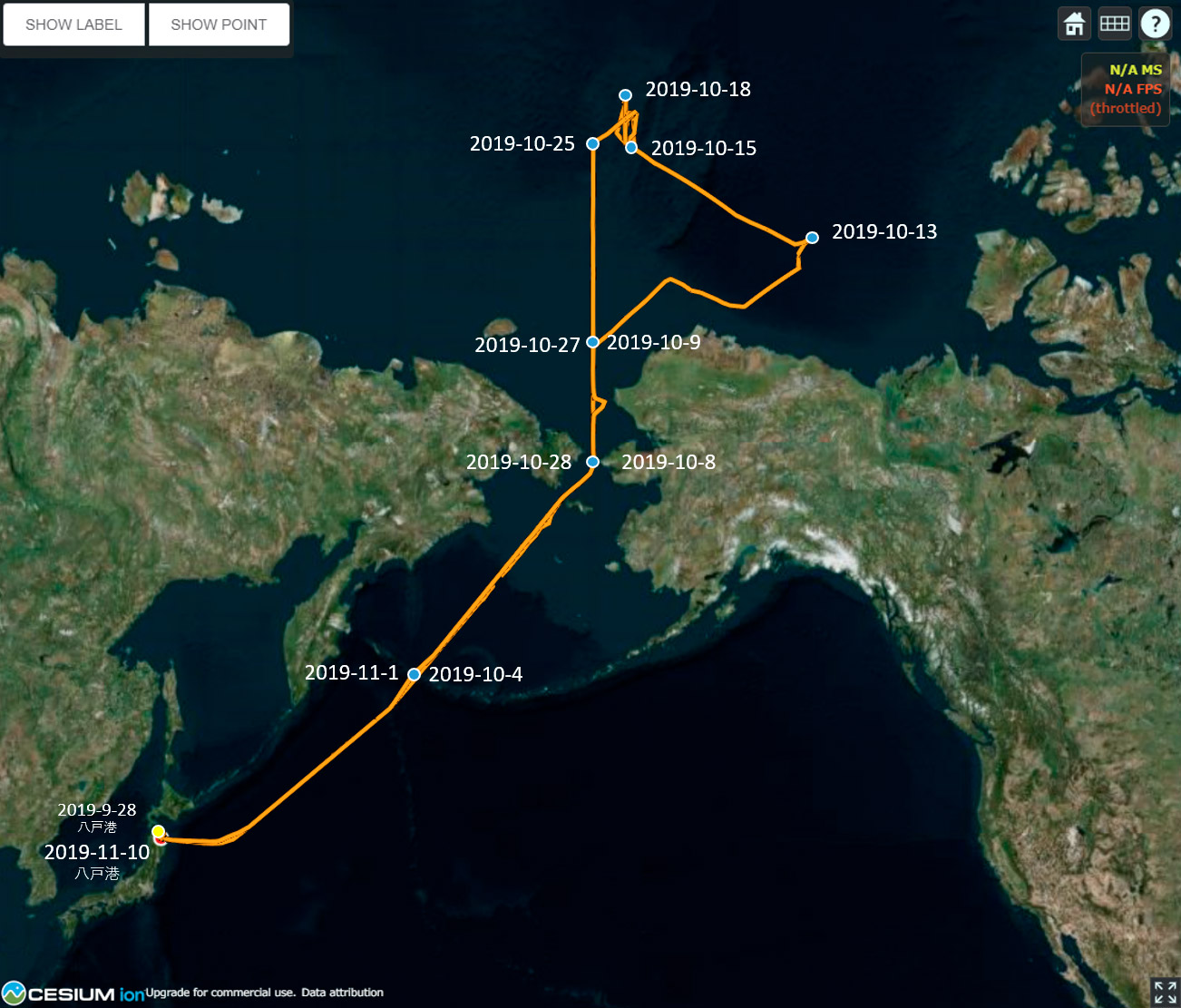
Message from the Arctic Ocean
R/V Mirai has arrived at Hachinohe port and completed this year's cruise on November 10. We hope that we will show you a lot of achievement in the future.
Last day of radiosonde observation. Acquired data is used for weather forecasts in various countries. So far we have proved that Arctic atmospheric observations using radiosondes are effective in predicting typhoons. From now on, we harry to verify how this year's data taken during the R/V Mirai Arctic cruise or MOSAiC expedition will serve.
We usually measure sea surface temperature in 5m depth on board. However, the temperature of the very surface of the water should be lower because it is directly cooled by the air, so we measure it with radiation thermometer as well. We compared the performance of the thermometer and the infrared camera that has the same wavelength band, and that is mounted on a drone.
It is perfect season for Aurora.
We had carried out CPS sonde observations to measure a number of cloud particles, a particle size, and phase state(water-phase cloud or ice-phase cloud) at this cruise. We fly the instrument shown in the picture to the sky by balloon, expecting to understand all the details of cloud in the Arctic, one of the components which have an influence over the Arctic climate.
We had carried out a plankton net observation. The net shown in the picture consists of four different mesh size of nets, with which we scoop up different plankton depending on the purposes. The collected plankton will be classified alive and used for breeding experiments. Now, what will we get?
A radiosonde observation, regularly run on board of R/V Mirai, plays a support role for a tethered balloon observation and a drone observation this year. These observations cannot be run when the wind in the upper sky is strong, so we run the radiosonde observation beforehand to obtain vertical profiles of wind speed and decide whether we do or don't.
A storm event ! Radiosondes and a scanning Doppler radar are detecting the storm. Strong southerly winds may influence on the ocean and sea ice conditions during an early phase of freezing season in the Chukchi Sea.
When the wind is strong, a tethered balloon cannot be operated. We carefully assess a limited opportunity to fly the balloon based on whether forecasts. Vertical profiles of wind speed and humidity obtained by a radiosonde are also useful to decide the maximum height of a tethered balloon measurement. The Bering Sea was calm today, so it was perfect for the observation.
A tethered balloon on R/V Mirai is an observing system to measure atmospheric profiles of concentrations and size distributions of aerosols (including black carbon). The data is used for understanding the chemical transport processes and validating a chemical transport model. This type of measurements will be also scheduled on the MOSAiC drift, contributing to systematic understanding of carbon cycles and cloud microphysics over the Arctic region.
The extent of Arctic sea ice was likely reached the 2019 minimum on September 17. Sea ice will be rapidly increasing after the end of September. There are two research vessels heading at the Arctic sea in the period, R/V Polarstern, a German icebreaker which plays a primary role in the MOSAiC project, and R/V Mirai. A lot of same observations will be performed on both vessels so we expect that these observations lead to the collaborative research.
R/V Mirai has finally left Sekinehama port for the Arctic sea. The captain was responding to the people who came to see off.
Map of the waters to be surveyed (planned)


The red dotted lines represent the vessel’s direction of travel. The black dots, blue dots, and yellow triangles indicate the planned observation points. The observation schedule is subject to change depending on weather, sea ice, and other conditions.
What is the MOSAiC Project?
In the MOSAiC project, a German icebreaker is to remain in the sea ice in the central area of the Arctic Ocean for one year from October 2019 for year-round observation. This project is intended to collect a large volume of comprehensive data on the atmosphere, sea ice, oceans, ecosystems, etc. that have been insufficiently monitored, and leverage the data for validation and development of numerical models.




